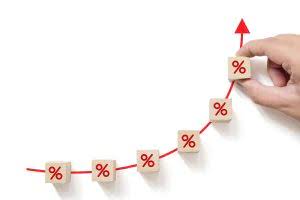
Ethical Decision Making resources provide an introduction to basic ideas in applied ethics, such as utilitarianism, rights, justice, virtue, and the common good. If you want to make quick decisions and seek complete authority, definitely it is not an approach for you. On the other hand, if you are making a high-stakes decision that can impact the company’s offerings, profit, framework for decision making pricing, public image, and culture, RAPID decision-making is the right approach for you. Above all, as they are part of the decision, everyone understands the context and intent of the decision which helps in organization-wide alignment to the objectives.
What Are the Benefits of Collaborative Decision-making

As someone who regularly makes decisions, I understand the importance of incorporating data and analysis into the decision-making process. In today’s data-driven world, it is critical https://www.bookstime.com/articles/cost-of-debt to use data to make informed decisions that are aligned with your goals and objectives. A decision-making framework enables organizations to approach complex issues methodically, leading to consistent and strategic choices.
- A keen understanding of logistics and being resourceful are crucial to effective operations management.
- Root Cause Analysis is a method for identifying the underlying causes of a problem or decision situation.
- The intuitive decision-making model can also be useful in cases where you don’t have a lot of time and need to make a decision quickly.
- A framework is essential for decision-making as this makes your task all cut out and easy for you to arrive at a decision-making framework that best suits you.
- However, it’s impossible to compare them and select the best one as they all serve different purposes and suit different situations.
- The dilemma is that you would be doing something right and wrong at the same time, and by taking one right course you will negate the other right course.
The benefits of a defined, scalable, decision-making process

In contrast, irreversible, high-consequence decisions, termed as one-way doors, warrant careful consideration by senior leadership or small teams. The biggest challenge is to assess expenses related to product development and marketing and understand the potential impacts on existing product lines. A successful expansion would increase revenue potential, boost market diversification, and improve brand visibility. Given below are the tips and best practices for a startup business to make informed decision-making using different frameworks. This framework is useful in various fields where robust, well-tested decisions are needed, such as business strategy, law, and public policy.
Cost-Benefit Analysis
When using gradients of agreement, those casting a vote can signal their enthusiasm by selecting from multiple options along a scale of declining approval. When there are many possible ways to go, one way to collect input bookkeeping and generate a consensus that most can live with is to ask for a ranking of the options that are more nuanced than a simple yes/no. If the answer to any of these was “no,” then you know there’s some work to do to round out the process.

What are the key components of a strategic decision-making framework?
What one has to remember here is that you can always make the result of what you want it to be by making the right intermediary decisions between the cause and the desired effect. What one should keep in mind is that the decision you take now is the first decision. The five elements include problem identification, data gathering, alternative generation, solution evaluation and selection, and implementation with monitoring. Leaders are expected to harness innovative technologies while maintaining the human element central to organizational identity and ethics. A comprehensive evaluation spans beyond immediate results, accounting for long-term implications and the wider impact on all stakeholders. This allows for iterative refinements and adaptations to strategies in response to new information or changing conditions, fostering a resilient and dynamic decision-making environment.
